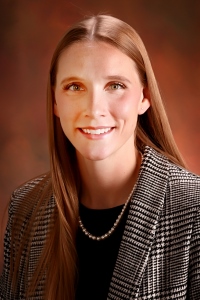 By Katelyn Krueger, PA-C, Dermatology
By Katelyn Krueger, PA-C, Dermatology
Are you over 40 with a light skin tone and a history of unprotected sun exposure or severe sunburns? If so, you’ve probably heard you are at risk of developing the most common form of precancerous skin lesions known as actinic keratoses (AKs) (pronounced ac-tinic kera-tow-seez). These are pink, rough, textured bumps with yellow scales that typically appear on the face, scalp, chest, arms, and hands.
They have about a 5-10% lifetime chance of transformation to a malignant squamous cell carcinoma if not adequately treated. Pain, oozing, and bleeding with minimal trauma may suggest that a transformation has already occurred and warrants further evaluation ASAP.
So, how do we treat these and prevent skin cancer transformation? Treatment can be directed at individual lesions with cryotherapy (liquid nitrogen) or a shave removal. This type of treatment is best for those that have minimal lesions. When several lesions exist, it is often best to treat these and the surrounding skin with therapies to not only destroy what we can see but also to treat those underlying lesions that are not yet apparent. Commonly used treatments include a patient applied topical chemotherapy or immunotherapy. Depending on the depth of the treatment needed, other treatment options, such as medical medium-depth chemical peels, photodynamic therapy (using light energy), and laser resurfacing, may be recommended.
There are benefits and risks to each of these treatments, and a dermatology provider can determine which option is best for you based on your skin condition.
Preventing Actinic Keratosis
Can we prevent the development of actinic keratosis in the first place? YES! The number one best practice for prevention is sun protection. A mineral-based SPF of 30+ applied to sun exposed areas daily, wide-brimmed hats, and UPF-rated sun protective clothing will all provide excellent protection. Topical and oral retinoids may also reduce the number of actinic keratoses compared to the average risk and may be prescribed for some high-risk patients.
Fall is the Perfect Time for Treatment
Fall is an excellent time to start discussing treatment, as minimized sun exposure both before and after treatment is required for best results.
Dermatology Care Full-Time at GRHS
Originally from Lowry, Katelyn Krueger, PA-C, has seen a higher number of advanced skin cancers in patients at rural clinics than in the metro. Unfortunately, when patients have to wait for specialty care, sometimes their conditions worsen, which can also add to their stress and worry.
Joining GRHS in August 2024, Katelyn is passionate about providing dermatology care locally and caring for members of her community. She provides complete dermatology care at Glenwood, Brooten, and Starbuck Medical Centers! For appointments, call 320.634.5157.


